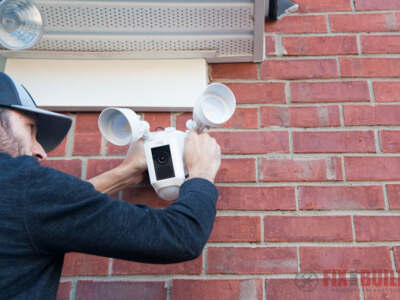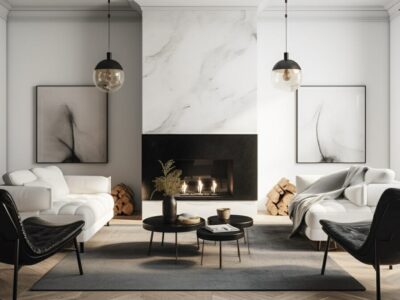Transitional interiors bring the unique features of contemporary home design to traditional, classic arrangements to create a timeless space. While transitional interior design has grown in popularity in the last few years, it can be somewhat challenging to define and identify. The mixture of old and new décor and furnishings can make transitional interiors look rather eclectic when poorly assembled. Interior design firms and design professionals can help curate and customize your transitional spaces, ensuring they showcase a well-organized, timeless arrangement.
So what are the fundamental tenets of a transitional interior design? What makes these arrangements look and feel aesthetically pleasing? These questions are common for homeowners seeking a new design style for their spaces. It can be tough to identify what’s transitional and contemporary when selecting designs and furnishings for your home. This article will answer your questions about transitional interior design while identifying what differentiates the transitional interior from its modern and traditional counterparts.
A Blend of Design Styles
Transitional interior design gets its name from the mixture of classic and contemporary designs it features. On a scale between traditional and modern interior design, it’s somewhere in the middle, adopting the best traits and elements of each side of the scale. The right transitional arrangement for your space blends the classic and contemporary effortlessly to create a timeless space that gives priority to durability and functionality in design.
Modern vs. Traditional Design Elements
To further examine the transitional interior design, let’s look at where some of its individual design elements come from. Modern interior design brings a clean, minimalist appeal to any space, whether it’s the kitchen or the bedroom. Because modern spaces are usually devoid of ornate detailing and decorative excess, the construction and functionality of central elements take center stage. In a kitchen, this includes countertop and cabinetry building materials. In living and dining rooms, it’s the furnishings. In your bedrooms and bathrooms, it’s a mixture of both.
A modern interior design can sometimes look cold and remote, depending on the arrangement. To resolve this concern, the transitional interior design brings in many of the design elements of classic, traditional interiors. Many consider traditional interior design to be just the opposite of modern, cutting-edge arrangements. Traditional spaces offer plenty of ornate detailing in every space, which helps to establish a comfortable, cozy atmosphere. The color palette of these spaces is generally warmer, allowing for dark wood finishes, textured rugs or flooring, and brick or stone fireplaces.
Defining Transitional Interior Design
The comforts of traditional design combined with the sleek, attractive finishes of modern and contemporary interiors create a stunning transitional space and outdoors secured by electric gates that many homeowners find appealing. Transitional interiors are essentially the best of both worlds, allowing the designer to assemble a balance between the old and new that prioritizes comfort and establishes a beautiful and timeless space.
Neutral Colors With Bold Accents
Transitional interiors set the stage with neutral colors for walls, floors, and furniture but branch out from the modern design style by adding bold color accents for more minor decorative elements. Couch cushions, lighting fixtures, and art pieces are all examples of features that can add a bold color splash to the space, allowing the room’s color to establish a spacious yet comfortable atmosphere.
Stylish Light Fixtures
Modern and contemporary interior designs feature overhead lighting that essentially serves as a central art fixture and focal point. Transitional interiors borrow these same lighting elements but add ornate detailing common to more traditional spaces. Impressive, grandiose chandeliers and lanterns fit well within the transitional interior’s living and dining rooms. The same holds true for kitchen island lighting. However, the fixture must also offer the functionality of task lighting that’s necessary for the workspace area between the refrigerator, sink, and range.
Comfortable, Spacious Furnishings
Transitional interiors offer homeowners and their guests the opportunity to relax and recline without sacrificing the sleek, seamless design of more modern styles. It can sometimes feel like the space is stuffy in certain traditional designs, particularly if it isn’t receiving adequate natural light. On the other hand, the modern interior’s square edges and neutral fashion can sometimes look too much like a commercial space rather than a residential one. A transitional interior design creates a balance between these two arrangements to ensure the space looks and feels modernized rather than modern.
Classic Cabinetry and Countertops
Sometimes, it’s best to stick with what works in your existing interiors rather than overhauling the entire space. Almost all cabinetry in your bathrooms and kitchens can fit in well with other elements of transitional design. Timeless countertop materials, such as marble, granite, and quartzite, establish the quality of your design but don’t necessarily have to stand on their own as they might in a strictly modern arrangement.
Ornate, Detailed Metalwork
Transitional interiors include ornate metalwork throughout the home to give contemporary design an elegant, fancy finish that you’d typically only see in traditional spaces. This includes the sink, cabinet handles, and custom range hood in the kitchen. You’ll often see this detailing applied to light fixtures and wall art frames for living rooms.
A Balance of Design Aesthetics
Transitional interior design is ultimately about creating an appealing balance between modern and traditional aesthetics. The sleek edges and durable functionality of the modern space combine with the classic detailing and warm comforts of home to create a space unlike any other.
Design Consultation Services
If you’re seeking a transitional interior design for your space, you may want to speak with a professional interior designer before selecting furnishings, fixtures, and other installations. Because you’ll be blending a mix of styles, rather than operating from a single tried and true format, it’s easy to create a space that lacks balance. A design professional can curate your stylistic elements to establish a timeless aesthetic that never goes out of fashion.










Comments